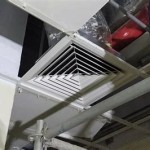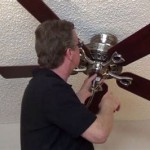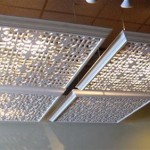Everything You Need To Know About Ceiling AC Vents In Houses
Ceiling AC vents play a crucial role in distributing conditioned air throughout a house. Understanding their function, types, and maintenance can significantly impact a home's comfort and energy efficiency. This article explores the essential aspects of ceiling AC vents, offering a comprehensive guide for homeowners.
Types of Ceiling AC Vents
Several types of ceiling AC vents are available, each designed for specific applications and aesthetic preferences. Common types include:
Register Grilles: These are the most common type, featuring adjustable dampers to control airflow. They come in various sizes and designs, offering flexibility in directing air.
Linear Diffusers: These vents provide a sleek, modern look and distribute air evenly over a larger area. They are often used in contemporary homes and commercial spaces.
Return Air Grilles: Unlike supply vents that distribute cooled air, return air grilles draw warm air back into the HVAC system for reconditioning. They are essential for proper air circulation.
Ceiling Diffusers: These vents are designed to blend seamlessly with the ceiling, offering a discreet appearance. They typically distribute air in a radial pattern.
Importance of Proper Vent Placement
Strategic vent placement is vital for optimal air distribution and energy efficiency. Incorrect placement can lead to uneven temperatures, hot or cold spots, and increased energy consumption. Considerations for placement include:
Room Size and Shape: Larger rooms may require multiple vents or larger diffusers to ensure adequate airflow. The shape of the room also influences vent location.
Window and Door Placement: Vents should be positioned to counteract drafts from windows and doors, preventing temperature fluctuations.
Furniture Placement: Avoid blocking vents with furniture or other obstructions, as this can restrict airflow and reduce efficiency.
Understanding Airflow and Pressure
Airflow and pressure are fundamental concepts related to AC vent performance. Understanding these principles can help homeowners troubleshoot issues and optimize their HVAC system.
Static Pressure: This refers to the resistance to airflow within the ductwork. High static pressure can strain the HVAC system and reduce efficiency.
CFM (Cubic Feet per Minute): This measures the volume of air flowing through the vents. Insufficient CFM can result in inadequate cooling or heating.
Regular Maintenance for Optimal Performance
Regular maintenance of ceiling AC vents is crucial for maintaining air quality and system efficiency. Neglecting maintenance can lead to dust buildup, reduced airflow, and potential health issues.
Cleaning: Regularly vacuum or wipe down vents to remove dust and debris. Consider removing the vent cover for thorough cleaning.
Inspection: Periodically inspect vents for any signs of damage, such as cracks or loose connections. Address any issues promptly to prevent further problems.
Filter Replacement: Changing air filters regularly is essential for maintaining air quality and preventing dust from accumulating in the vents.
Troubleshooting Common Vent Problems
Several common issues can arise with ceiling AC vents. Recognizing these problems and their potential solutions can save homeowners time and money.
Insufficient Airflow: This can be caused by blocked vents, dirty filters, or ductwork issues. Check for obstructions, replace filters, and consider professional duct cleaning.
Noisy Vents: Whistling or rattling sounds can indicate loose ductwork or damper problems. Tighten connections and inspect dampers for damage.
Leaking Vents: Condensation can sometimes form on vents, leading to dripping water. This can indicate insulation problems or ductwork leaks.
Choosing the Right Vents for Your Home
Selecting the appropriate vents for your home involves considering several factors, including aesthetics, functionality, and budget.
Aesthetic Considerations: Vents come in various styles and finishes to match different interior designs. Choose vents that complement your home's decor.
Functional Requirements: Consider the size and shape of the room, as well as the desired airflow pattern, when selecting vents.
Budget: Vents are available at different price points, so consider your budget when making a selection.
Boosting Energy Efficiency with Your Vents
Ceiling vents can play a role in enhancing energy efficiency. By optimizing vent performance, homeowners can reduce energy consumption and lower utility bills.
Zoning: Using zone dampers in conjunction with your vents allows for controlled airflow to different areas of the house, reducing energy waste.
Sealing Ductwork: Leaking ductwork can significantly reduce HVAC efficiency. Ensure ductwork is properly sealed to prevent air loss.
Insulation: Proper insulation around ductwork helps maintain the temperature of the conditioned air, reducing energy loss.

Ceiling Ac Vents Pros And Cons Aire Serv

The Benefits Of Using Ceiling Hvac Vents

Changing All My A C Heating Ceiling Vents For Better Airflow Between Naps On The Porch

How To Open And Close Ceiling Air Vents

Everything You Need To Know Ceiling Cassette Air Conditioning

Everything You Need To Know About Cassette Air Conditioners Metropolitan Conditioning

Changing All My A C Heating Ceiling Vents For Better Airflow Between Naps On The Porch

Everything You Need To Know About Cassette Air Conditioners Metropolitan Conditioning

Why Adding A Return Air Vent Improves Your Home S Comfort Bird Family Insulation

Return Air Vent Internachi Forum
Related Posts








